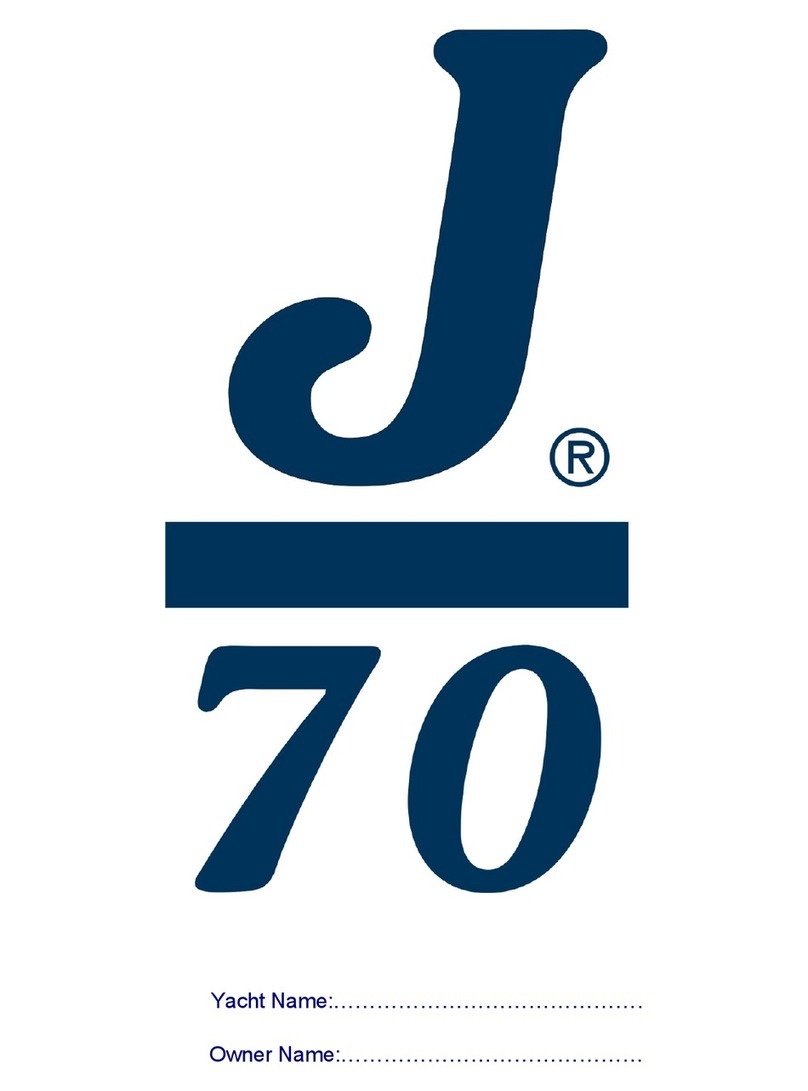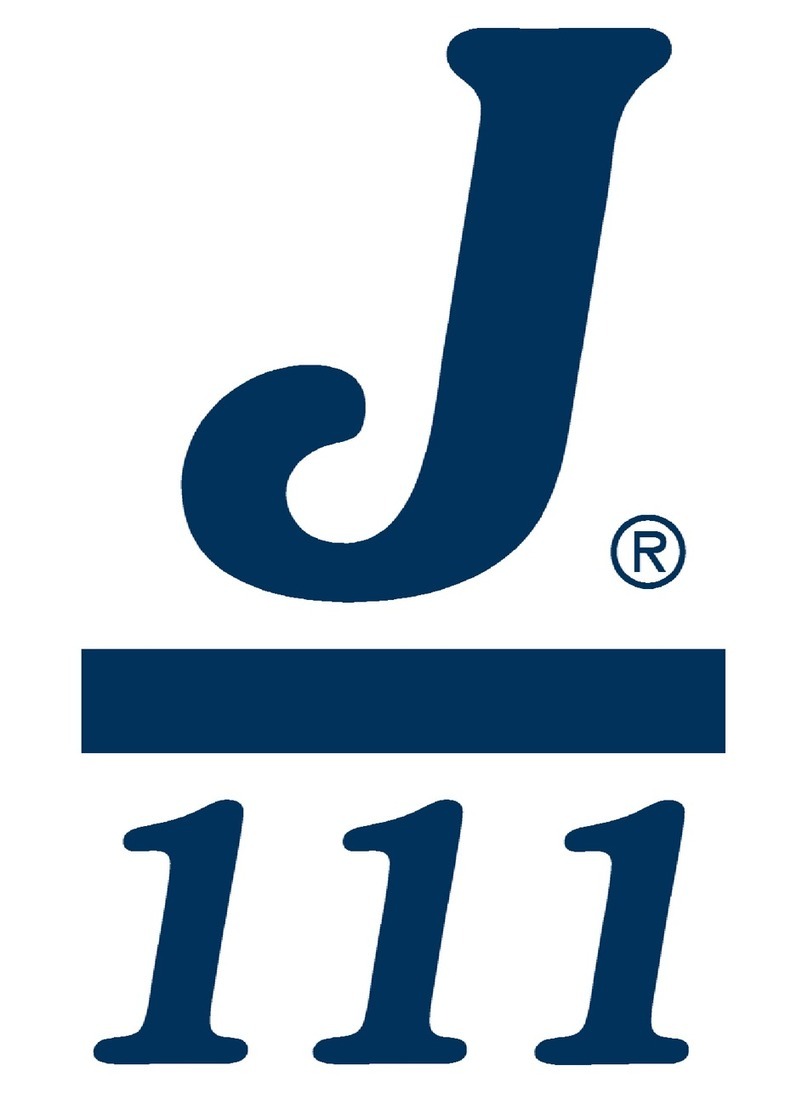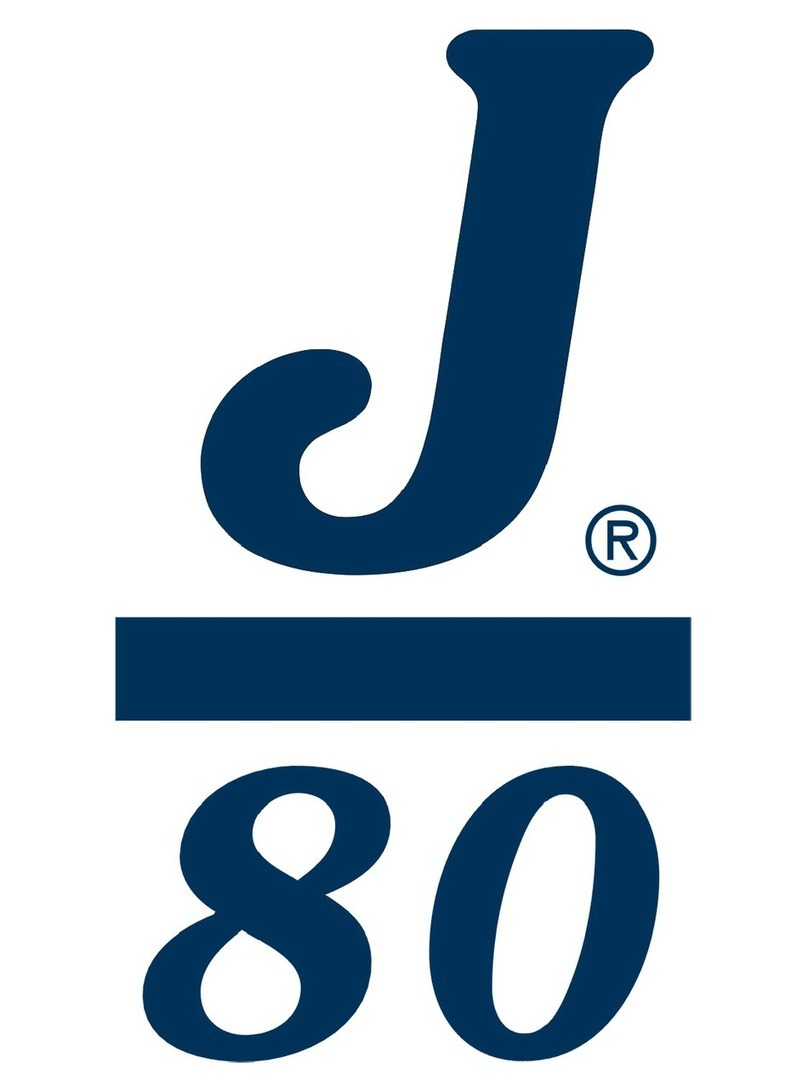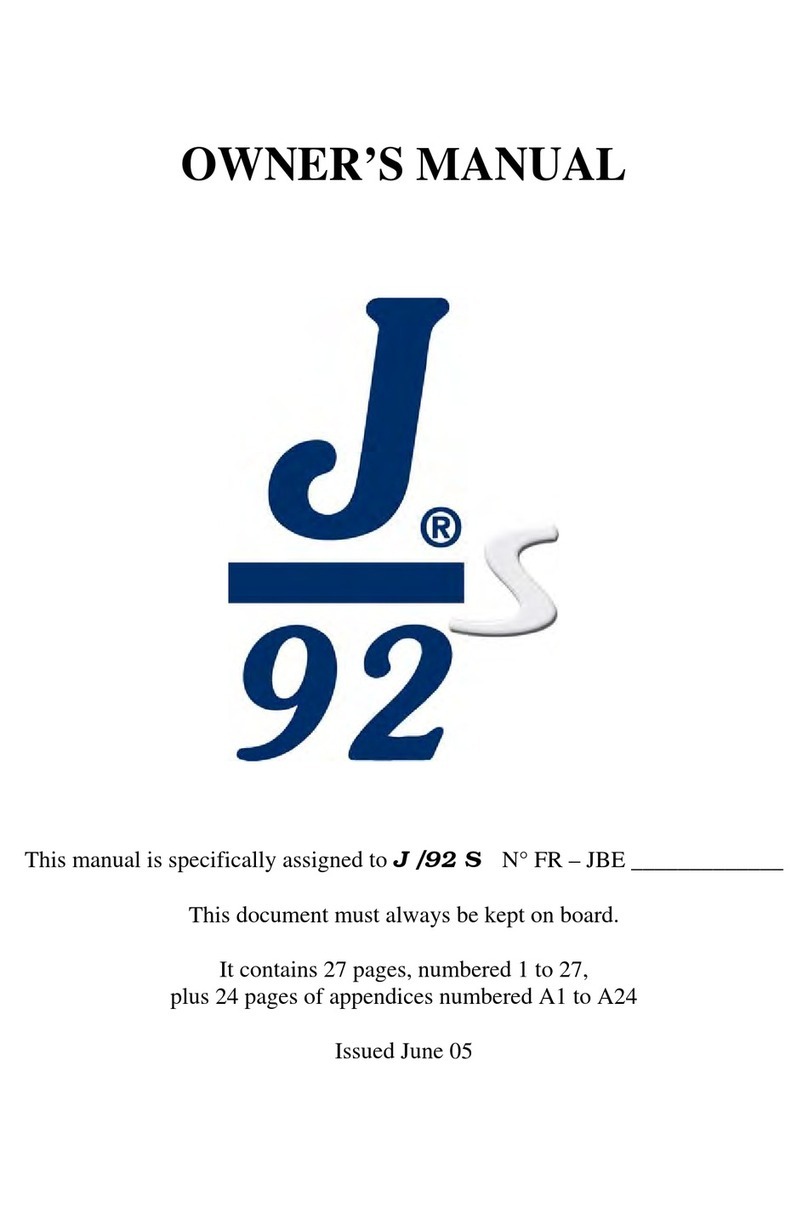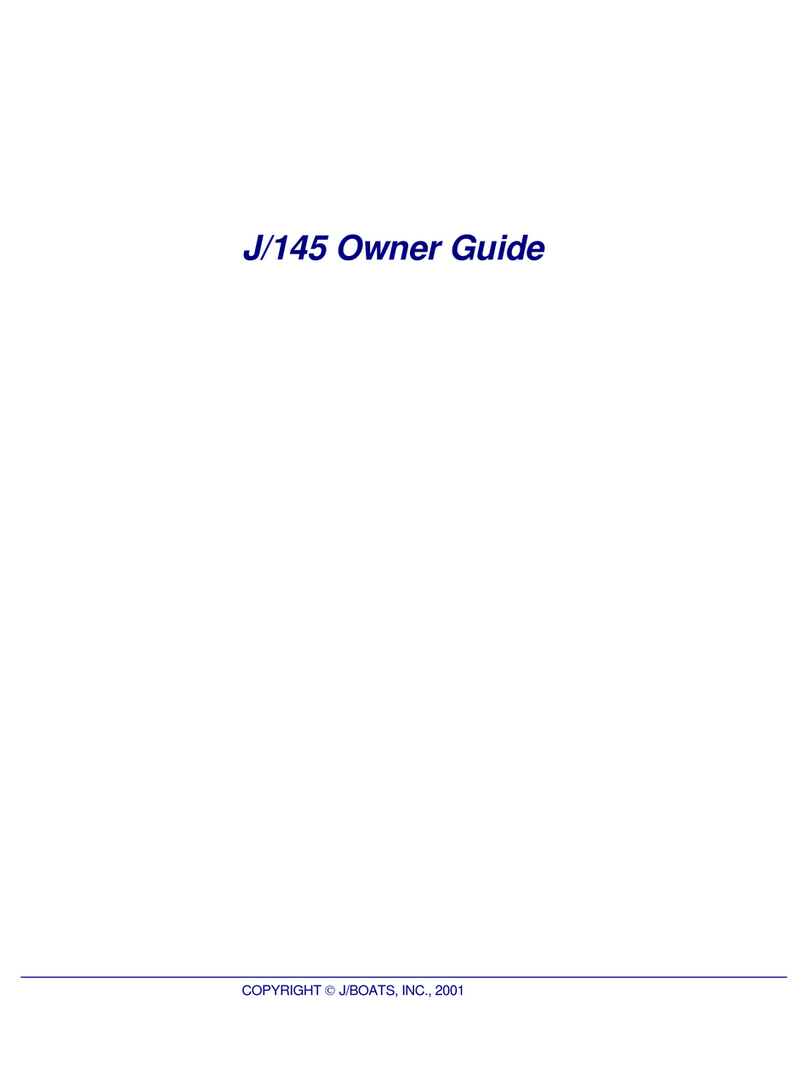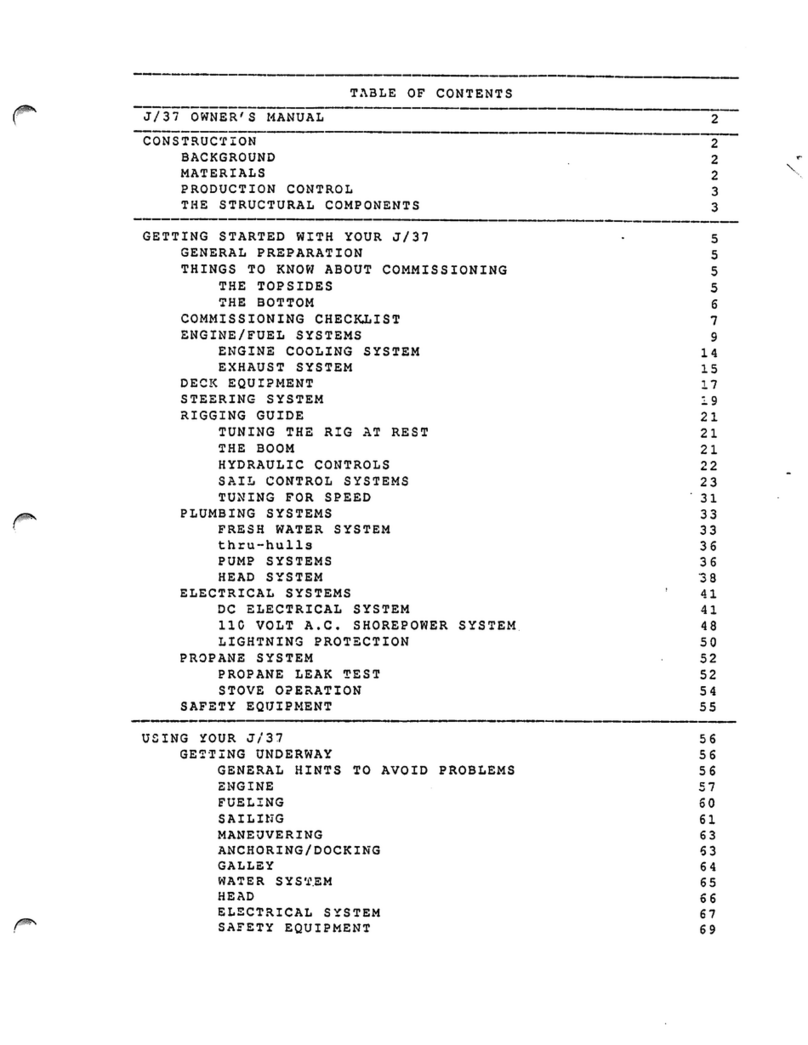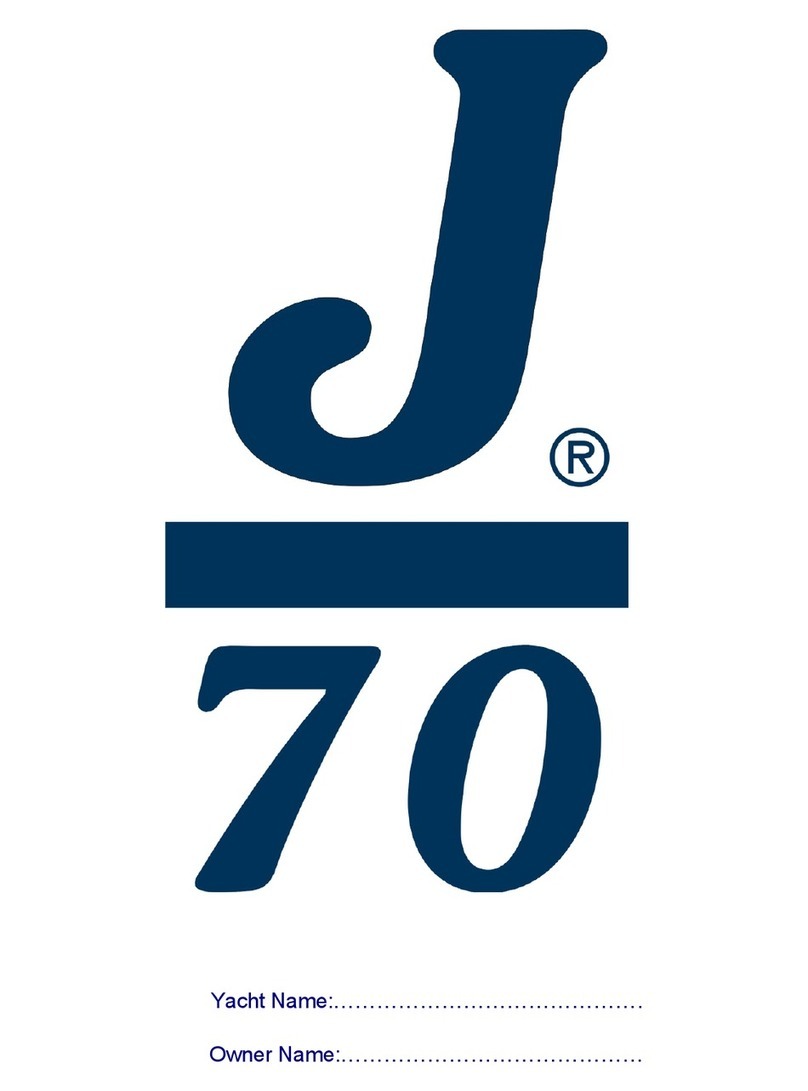J88 OWNER MANUAL 3
Table of Contents
Introduction...................................................................................................................................................................... 4
CE Certification ............................................................................................................................................................... 5
Specifications.................................................................................................................................................................. 8
Important Contacts......................................................................................................................................................... 9
Commissioning Checklist ...........................................................................................................................................14
Important Commissioning Follow-up........................................................................................................................ 15
Tuning the Rig ...............................................................................................................................................................16
Diagrams, Layouts, & Schematics.............................................................................................................................18
Mainsheet Diagram.....................................................................................................................................................18
Traveler System Layout..............................................................................................................................................19
Adjustable Jib Lead System.......................................................................................................................................20
Cabin Top Layout........................................................................................................................................................21
Reefing System Layout...............................................................................................................................................22
Backstay System.........................................................................................................................................................23
Cunningham System ..................................................................................................................................................24
Spinnaker Sheet Blocks..............................................................................................................................................25
Engine Fueland Exhaust Layouts............................................................................................................................. 26
Bilge Pump Layout & Switch ......................................................................................................................................27
Thru-Hull & Seacock Locations..................................................................................................................................28
Head & Holding Tank Schematic................................................................................................................................ 29
DC Distribution Panel.................................................................................................................................................. 30
DC Component Layout ..............................................................................................................................................31
DC Battery Charging Schematic................................................................................................................................ 32
AC Optional Schematic & Panel ................................................................................................................................33
Bonding System .........................................................................................................................................................34
Engine System ..............................................................................................................................................................35
Sail Drive......................................................................................................................................................................35
Fuel System................................................................................................................................................................. 35
Engine Cooling & Exhaust Systems.......................................................................................................................... 35
Engine Safety Precautions.........................................................................................................................................36
Engine Start & Shutdown............................................................................................................................................37
Engine Maintenance...................................................................................................................................................38
Plumbing Systems........................................................................................................................................................39
Thru-Hulls & Seacocks...............................................................................................................................................39
Pump Systems............................................................................................................................................................ 39
Head System...............................................................................................................................................................39
Electrical System ..........................................................................................................................................................40
Optional 110V AC System............................................................................................................................................41
Safety..............................................................................................................................................................................43
Maintenance Tips & Checklist ....................................................................................................................................45
Storage Tips...................................................................................................................................................................48
APPENDIXA- Best Practices - Boat Inspection.......................................................................................................50
APPENDIX B -ABS(Dated) Guidelines for SurveyAfter Construction...................................................................55
APPENDIX C - Care and Cleaning Recommendations forAcrylic Portlight............................................................ 56
APPENDIX D - J/88 Supplier List...............................................................................................................................58
CCFC Limited Warranty.....................................................................See Warranty Package Included with the Yacht
